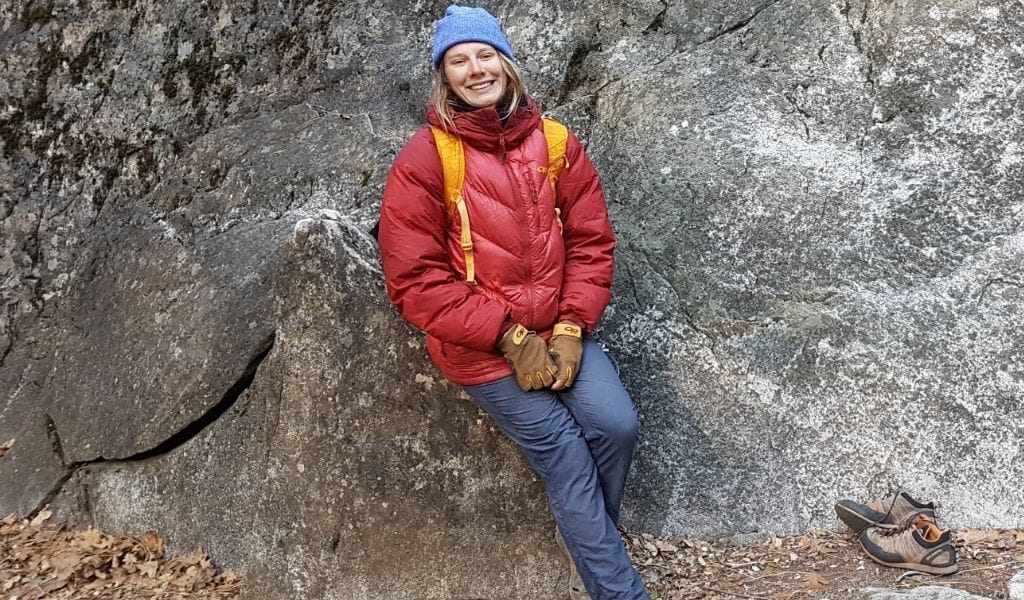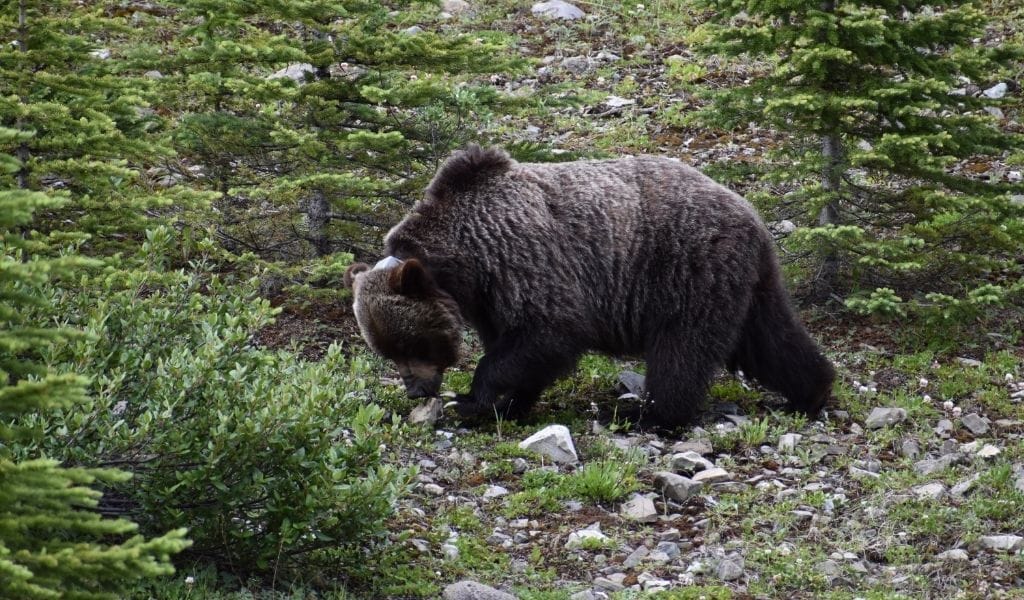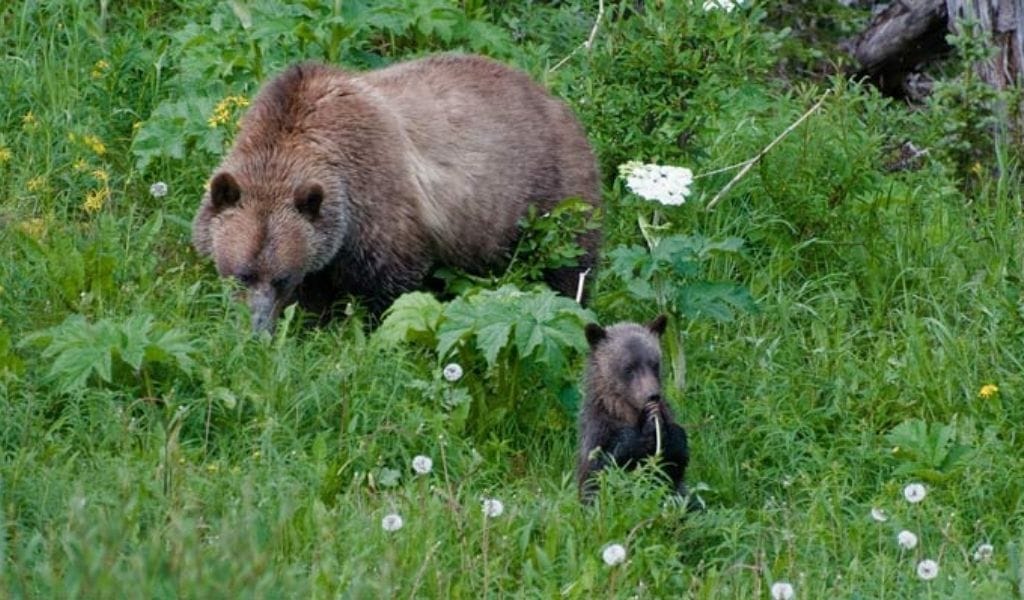- Bow Valley Insider
- Posts
- The Cost of the Perfect Bear Photo in Kananaskis
The Cost of the Perfect Bear Photo in Kananaskis
What Alberta’s roadside bears reveal about the uneasy coexistence between people, policy, and wildlife.
Every spring in Kananaskis, as snow recedes from the ditches, the first grizzly sightings begin. Drivers ease off the gas. A few pull over. Before long, the highway clogs with a row of stopped vehicles, windows down, phones out, a low murmur rising above the idling engines. A bear jam has formed.
It is a scene so common along Highway 40 and the Smith-Dorrien Trail that it has become part of the landscape itself, an uneasy meeting point between wildlife fascination, photography culture, and conservation policy. To wildlife managers and researchers, these moments represent something deeper: the growing tension between our appetite to see nature up close and our ability to coexist with it responsibly.
A pair of 2023 studies led by Annie Pumphrey, now a Senior Wildlife Policy Analyst with the Government of British Columbia, examined that tension in Peter Lougheed Provincial Park. Her research reveals how these traffic jams of curiosity are more than minor annoyances. They are symptoms of a management system stretched between competing priorities: protecting bears, satisfying tourists, and holding the line against complacency.

Annie Pumphrey, Senior Wildlife Policy Analyst, Government of BC
Why Bear Jams Happen
In one of Pumphrey’s studies, 22 conservation officers, bear technicians, ecologists, and park staff were interviewed about what causes bear jams. The responses were telling.
Human behaviour topped the list, identified by 71 percent of participants as the main driver. Many spoke of visitors acting “without common sense” or, as one put it, suffering from “bear blindness.” The moment a grizzly appears, judgment evaporates.
“They are overcome with the desire to get a good picture,” one expert said, “and that can override their desire for personal safety.”
Wildlife photographers were singled out as a particularly complex group, some deeply respectful, others less so. “There are local photographers who follow the same bears for hours each day,” Pumphrey explained in our interview. “Some have developed what they see as personal relationships with these animals, claiming they ‘know’ the bears and have a ‘right’ to be close to them.”

The studies also found that habitat factors play a powerful role. Sixty-seven percent of experts said the simple presence of lush roadside vegetation keeps bears coming back. For many female grizzlies with cubs, the roadside offers a safe buffer from dominant males. “Those sows are near people because it is safer than being near boars,” Pumphrey said. “They are taking advantage of good forage and the open sightlines.”
Infrastructure compounds the issue. Narrow shoulders, blind corners, and the absence of pullouts along Highway 40 create perfect conditions for chaos. When a 300-kilogram bear stops to feed ten metres from the pavement, there is nowhere for drivers to go but into gridlock.
The Human Dimension
The companion visitor survey, distributed to 380 people who had recently visited Peter Lougheed Provincial Park, showed how normalized this behaviour has become.
Eighty percent of respondents said people stop simply to take photos or video. Nearly the same number, 79 percent, admitted most visitors do not understand the risks roadside viewing poses to themselves or the bears.
More than two-thirds had witnessed a bear jam firsthand. Of those, 65 percent said it had negatively affected their park experience. Frustration was not just about traffic. It was about watching others behave recklessly: leaning out of car windows, stepping onto the shoulder for a closer shot, or parking inches from a feeding grizzly.
As one respondent wrote, “It is incredibly frustrating to have cars slow down and block traffic just to get a poor-quality picture for social media. I have seen kids leave cars when cubs are in the area.”
The cumulative effect, Pumphrey noted, is cultural. “People in the Bow Valley get used to seeing what we call ‘park bears,’ bears that are more tolerant of people,” she said. “It creates a false sense of safety. When those same people visit more remote areas, they assume all bears behave that way. They do not.”
This normalization, she added, is one of the most dangerous outcomes of habituation. Bears learn that vehicles and roads are safe, while humans learn that close encounters are ordinary. Both sides become desensitized, and both are put at risk.
The Camera Effect
If there is one force magnifying the problem, it is photography. The rise of social media and accessible telephoto lenses has turned wildlife viewing into a competition for intimacy.
“Some photographers feel entitled,” Pumphrey said. “You can see it in the images that fill local galleries, bears looking directly into the lens. That means the bear stopped what it was doing, looked up, and was disturbed.”
Every time such an image is shared, she argued, it normalizes the wrong behaviour. Visitors arrive expecting close-range encounters. Few realize that a single bear might face hundreds of vehicles a day, each disrupting its feeding and sapping energy reserves needed for winter.

Still, Pumphrey does not see photography as the enemy. “When done responsibly,” she said, “it is one of the lowest-impact ways for people to engage with nature. It is just that we need a cultural shift, from glorifying close-ups to celebrating landscape-scale photos where the bear appears as it would in the wild.”
She points to efforts in the United States where wildlife managers encourage distant, contextual photography rather than intimate portraits. “It reframes what a ‘good’ bear photo looks like,” she said. “That small change can reshape public expectations.”
Managing the Unmanageable
If bear jams are a recurring phenomenon, it is not for lack of effort. Alberta Parks has spent decades refining its bear management toolkit.
At the core is a long-running aversive conditioning program, a form of behavioural training that uses non-lethal deterrents like noise makers, beanbag rounds, or rubber bullets to teach bears to avoid high-human-use areas such as campgrounds, picnic zones, and, at times, roadsides.
What is aversive conditioning?
Aversive conditioning is a non-lethal management technique used to discourage bears from associating humans or developed areas with safety or food. Park staff use stimuli such as cracker shells, airhorns, or rubber projectiles to move bears away from problem areas. The goal is not punishment, but negative reinforcement, teaching bears that certain spaces are uncomfortable or unsafe, thereby preventing future conflicts.
According to provincial data cited in Pumphrey’s research, two-thirds of all aversive conditioning actions in 2019 took place along roadsides, and 76 percent involved the same six collared bears. Those statistics suggest that a handful of resident grizzlies are responsible for most roadside interactions, a cycle that demands constant intervention.
“It is essentially full-time work,” Pumphrey said. “These bears have learned how to exist in a human-dominated landscape. They are habituated to people but not food-conditioned, which some might call coexistence. But maintaining that requires constant effort and staff presence.”
Her studies found widespread support among both experts and visitors for no-stopping zones, better signage, and consistent messaging. Visitors also favoured enforcement, but only when coupled with clear education.
“The messaging gap is a real issue,” she said. “There is plenty of information about bear safety while hiking, but almost nothing about roadside viewing. You do not see signs in visitor centres or on the landscape explaining how to behave when you encounter a roadside bear.”
Beyond Management: A Shifting Narrative
When asked if things have improved since her research was published, Pumphrey hesitated. “From what I understand, it is much the same,” she said. “What has changed is the tone of public and political discourse.”
In Alberta, she explained, there is a growing narrative that “there are too many grizzly bears.” That sentiment, coupled with a recent policy allowing licensed hunters to kill so-called “problem bears” under certain conditions, worries her.
“It is a step backward,” she said. “That kind of policy places blame on the bear rather than on human behaviour. The evidence shows that reducing bear numbers does not necessarily reduce conflict.”
Her point is supported by decades of wildlife research: conflicts stem more from habituation, attractants, and human behaviour than from sheer population size. Even when bear numbers drop, problems can persist or worsen if people continue to act the same way.
“What is needed,” Pumphrey said, “is investment in proactive management, better attractant control, stronger public education, and long-term coexistence infrastructure. But those programs rarely get the same funding or attention as reactive measures.”

She added that funding transparency is part of the problem. “It would be nice to see more transparency from the government about where the funds from the Kananaskis Conservation Pass are going,” Pumphrey said. “There is a lot of development of new parking lots and day-use areas, but not much apparent funding going into actual conservation. We are opening and expanding Kananaskis to have more capacity for more visitation, but there needs to be clearer and more transparent information about how wildlife and habitat conservation goals are being met alongside the increase in infrastructure.”
Guided Solutions
One bright spot, she believes, lies in guided wildlife tours.
“Guided tours can be excellent tools,” she said. “They manage visitor expectations, reduce pressure on park staff, and help people learn how to observe wildlife responsibly.”
She points to British Columbia’s Commercial Bear Viewing Association, which certifies guides in ethical and sustainable viewing practices, and to the province’s ongoing work on a commercial bear viewing strategy. “Those models could work in Alberta,” she added. “If wildlife viewing continues to grow, having a provincial framework for training and accountability would go a long way.”
Lessons From the Roadside
Taken together, Pumphrey’s research offers one of the most comprehensive looks at how humans and grizzlies coexist in Kananaskis. It is also a study of how public perception and policy collide on the asphalt.
Her expert participants emphasized three things:
The need for consistent, visible messaging on roadside bear behaviour.
No-stopping zones during peak seasons.
Stable, full-time funding for bear management and research, rather than reactive crisis response.
Those solutions might sound bureaucratic, but they are rooted in a simple truth: coexistence is labour-intensive. “It requires constant conditioning, monitoring, and education,” Pumphrey said. “The bears do not stop learning, and neither can we.”
The Road Ahead
What happens on a two-lane mountain highway in Kananaskis is, in many ways, a mirror. It reflects our desire to be close to nature and our struggle to do so responsibly.
Wildlife tourism is booming. The global industry was valued at over $135 billion in 2022, and demand is still climbing. In Kananaskis alone, visitation hit a record 5.3 million people in 2020 and 4.9 million in 2024. Each new visitor brings another potential bear jam, another chance for policy to be tested.
Pumphrey’s research suggests that coexistence is not about eliminating bear jams entirely. It is about managing them intelligently. “There will always be roadside bears,” she said. “The goal is to reduce risk, not to remove the experience. If people can see a bear safely from a distance, with the right guidance, that can be a powerful moment for conservation.”
Kananaskis has some of the most habituated bears in the Rockies, animals that have learned to navigate campgrounds, trails, and roadsides with surprising composure. But as Pumphrey warns, “That balance is fragile. It depends on constant management, consistent messaging, and a public that understands why the rules exist.”
Every stopped car, every shutter click, is part of a larger equation: how to share space with one of North America’s most powerful symbols of wilderness without loving it to death. And as long as a grizzly can still stop traffic in Alberta, that question will keep demanding an answer.
What Do You Think?
Leave your questions or comments below.
Reply